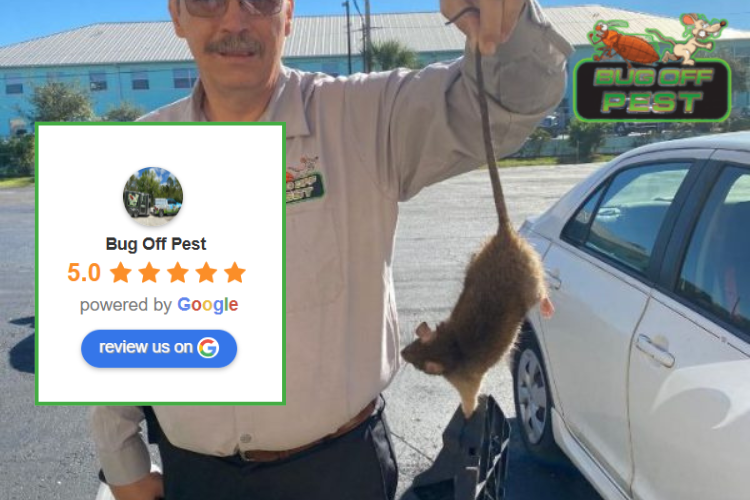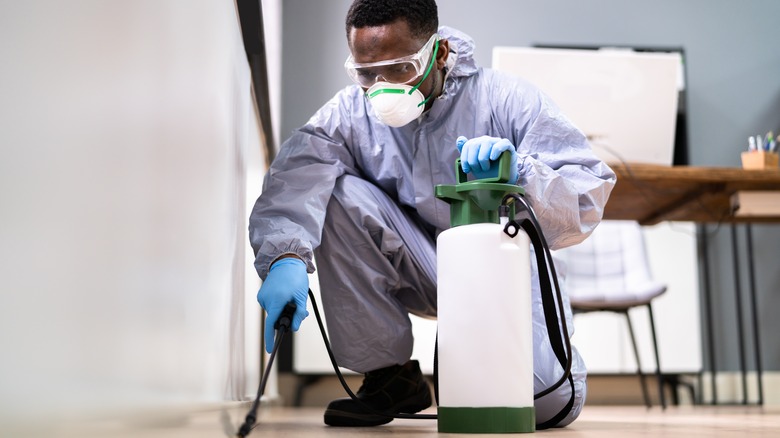Reliable Rodent Control Port Charlotte to Keep Your House Clean from Rodents
Reliable Rodent Control Port Charlotte to Keep Your House Clean from Rodents
Blog Article
Discover the most up to date Developments in Bug Control and Exactly How to Apply Efficient Treatment Solutions
In recent years, the area of insect control has seen considerable developments, driven by the requirement for sustainable and effective therapy options. Ingenious techniques such as Integrated Bug Administration (IPM) combine environmentally friendly exercise with advanced technology, enhancing both efficacy and ecological duty. The assimilation of smart modern technologies and DIY techniques has equipped individuals to deal with bug problems a lot more properly. As we explore these developments, it becomes vital to understand just how ideal to carry out these strategies in numerous settings to attain optimal outcomes. The implications for bug management methods could be transformative.
Eco-Friendly Insect Control Options
Over the last few years, the need for eco-friendly pest control options has surged as property owners and services alike look for sustainable alternatives to conventional chemical treatments. This shift is driven by growing ecological recognition and a need to decrease the wellness threats related to artificial pesticides.

Eco-friendly pest control approaches include a series of approaches that prioritize the use of natural substances and methods. Integrated Insect Management (IPM) is one such technique, integrating biological, social, and mechanical techniques to handle pest populaces while minimizing reliance on chemicals (Wildlife removal services). This all natural technique emphasizes avoidance with habitat control and the introduction of all-natural predators, thereby promoting a well balanced environment
An additional popular alternative is using organic chemicals derived from plants, which often tend to be less harmful to non-target organisms. Products like neem oil and diatomaceous planet have obtained traction for their efficiency in regulating insects while presenting minimal dangers to human health and the atmosphere.
Additionally, exclusion methods, such as securing entrance factors and preserving sanitation, play a critical function in green bug management. By adopting these sustainable methods, organizations and people can effectively manage pests while promoting a healthier planet for future generations.
Smart Innovation in Insect Administration
Technology is improving the landscape of parasite monitoring, with clever modern technology emerging as a critical force in enhancing effectiveness and performance - Wildlife removal services. The integration of Web of Points (IoT) tools, expert system (AI), and data analytics is reinventing how insect control specialists come close to infestations
Smart catches geared up with sensing units can identify bug task in real-time, sending out prompt informs to drivers. This permits prompt responses, minimizing damage and reducing the requirement for substantial treatments. Additionally, AI algorithms assess historic data to predict pest actions, allowing proactive treatments based on environmental problems and invasion patterns.
Drones and automated lorries are also playing a substantial duty in parasite administration, offering aerial analyses of huge areas, identifying hotspots, and also dispersing targeted therapies. These innovations not just simplify procedures however likewise enhance security by limiting human direct exposure to potentially dangerous chemicals.
Additionally, mobile applications encourage consumers to keep an eye on insect task and access specialist advice, cultivating a collaborative technique to pest monitoring. Generally, the fostering of smart innovation is establishing a new requirement in parasite control, emphasizing data-driven decisions and lasting practices that eventually profit both homeowners and experts alike.
Integrated Bug Management Techniques
Integrated Bug Monitoring (IPM) uses a holistic strategy to pest control, incorporating different methods to properly handle bug populaces while minimizing dangers to human wellness and the environment. IPM focuses on comprehending the pest life cycle, their natural adversaries, and the ecological community in which they thrive.
One of the essential parts of IPM is keeping an eye on pest populaces via routine inspections and data collection. This permits for the identification of insect thresholds, establishing when intervention is essential. Social techniques, such as plant turning, environment, and hygiene manipulation, are necessary in lowering parasite frequency and advertising plant wellness.
Mechanical controls, consisting of traps and barriers, are likewise essential in IPM. These methods can physically remove or hinder bugs without using chemicals. When required, the cautious application of chemical controls is employed, focusing on targeted therapies that lessen environmental influence.
Education and learning and collaboration amongst stakeholders, consisting of farmers, pest control specialists, and the neighborhood, are vital for the successful execution of IPM methods. By prioritizing lasting methods, IPM not only addresses pest problems but additionally promotes a healthier community.
Biological Control Approaches
Many biological control approaches are progressively recognized for their efficiency in managing bug populations while promoting environmental equilibrium. These techniques harness all-natural killers, parasites, and virus to lower pest numbers without depending on synthetic chemicals. The intro of ladybugs can effectively manage aphid populaces, while nematodes target soil-dwelling insect larvae.
Furthermore, making use of microbial pesticides, such as Bacillus thuringiensis (Bt), supplies an environmentally friendly choice for managing caterpillar insects. These items specifically target pest species, lessening injury to useful pests and pollinators. Preservation biological control emphasizes improving habitats for all-natural opponents, such as birds and beneficial insects, thus motivating their existence in agricultural systems.
Research proceeds to reveal innovative approaches within this area, such as view it now making use of scents to disrupt pest breeding patterns or the growth of biocontrol representatives via genetic modification. Implementing these methods can lead to lasting parasite monitoring techniques that minimize the dependence on chemical treatments, inevitably cultivating healthier environments. As understanding of these methods grows, they are becoming indispensable parts of incorporated insect management (IPM) strategies, offering an equilibrium between effective parasite control and ecological stewardship.
DIY Pest Control Solutions
As homeowners look for efficient ways to take on bug problems, DIY bug control services have gained appeal for their availability and cost-effectiveness. These techniques empower people to deal with infestations making use of readily offered materials and techniques, usually without the demand for expert intervention.

Furthermore, preserving proper cleanliness and regular assessments can avoid pest entry and nesting (Wildlife removal services). Straightforward techniques, such as sealing splits, eliminating food sources, and decluttering, can significantly reduce insect populations. Catches, both homemade and commercially readily available, can likewise offer reliable services for monitoring and managing specific bugs like rodents or pests

Conclusion
The integration of green bug control choices, clever modern technology, and ingenious management strategies offers an extensive approach to official statement reliable insect management. By accepting Integrated Insect Monitoring (IPM) and using biological control approaches, alongside do it yourself services, liable and sustainable parasite control can be achieved. These innovations not only boost the efficiency of parasite management techniques but additionally add to a much healthier atmosphere. Implementing these approaches promotes a well balanced community while properly dealing with pest populaces.
Green parasite control methods encompass a range of techniques that prioritize the use of natural compounds and methods. Integrated Bug Administration (IPM) is one such technique, incorporating organic, social, and mechanical techniques to handle bug populaces while lowering dependence on chemicals. As understanding of these methods grows, they are ending up being important elements of integrated insect administration (IPM) techniques, providing a balance between reliable parasite control and ecological stewardship.
The assimilation of eco-friendly parasite control alternatives, clever modern technology, and ingenious administration techniques presents an extensive approach to effective insect administration. By embracing Integrated Insect Administration (IPM) and utilizing organic control approaches, alongside DIY solutions, lasting and responsible pest control can be accomplished.
Report this page